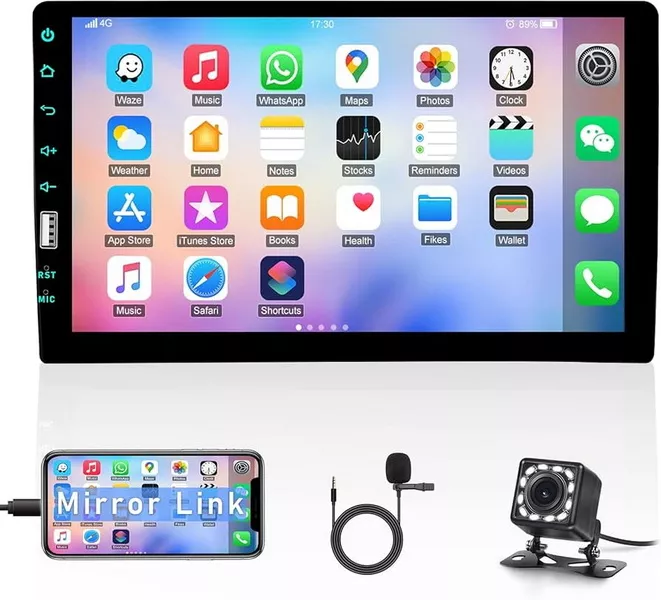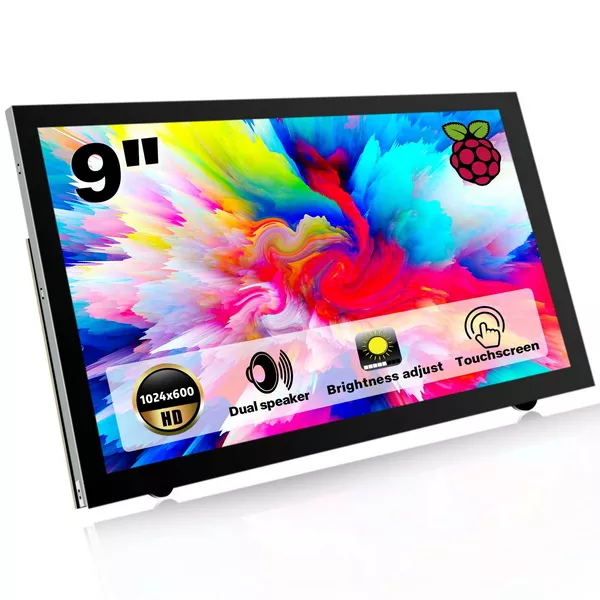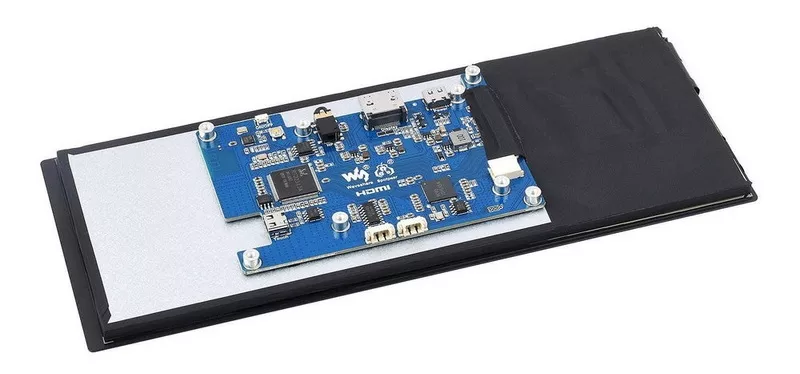News
How Stuff Works Capacitive Touch Screen?
How Stuff Works Capacitive Touch Screen?
Content Menu
● What is a Capacitive Touch Screen?
● How Do capacitive touch screen Work?
● Types of Capacitive Touch Screen
● Advantages of Capacitive Touch Screen
● Common Issues with Capacitive Touch Screen
● Applications of Capacitive Touch Screen
● Future Trends in capacitive touch screen Technology
● Manufacturing Process of Capacitive Touch Screen
>> 1. What is the difference between capacitive and resistive touch screen?
>> 2. Why do capacitive screen not work with gloves?
>> 3. Can capacitive touch screen work in wet conditions?
>> 4. How do projected capacitive touchscreen improve accuracy?
>> 5. What maintenance do capacitive touchscreen require?
Capacitive touch screen have become an integral part of modern technology, revolutionizing how we interact with devices. From smartphones and tablets to kiosks and ATMs, capacitive touch screens provide a seamless user experience through their sensitivity and responsiveness. This article delves into the workings of capacitive touch screens, their types, advantages, common issues, and future trends while also providing visual aids and videos to enhance understanding.
What is a Capacitive Touch Screen?
A capacitive touch screen is a display that uses the electrical properties of the human body to detect touch. Unlike resistive touch screens, which rely on pressure, capacitive screens respond to the conductive properties of a finger or a specialized stylus. When a user touches the screen, it alters the electrostatic field at that point, allowing the device to register the touch.
How Do capacitive touch screen Work?
capacitive touch screen consist of several layers:
- Glass Panel: The top layer is typically made of glass, providing durability and clarity.
- Conductive Layer: Beneath the glass is a transparent conductive material, often Indium Tin Oxide (ITO), which forms a grid of electrodes.
- Insulating Layer: This layer separates the conductive material from the underlying display.
When a finger approaches or touches the screen, it creates a coupling capacitor between the finger and the conductive layer. This change in capacitance is detected by sensors located at various points on the screen.
Types of Capacitive Touch Screen
There are two primary types of capacitive touch screen:
- Surface Capacitive Touch Screens: These use a single conductive layer. Sensors are located at the corners of the screen. When a finger touches the screen, it draws charge from the corners, allowing detection of the touch location.
- Projected Capacitive Touch Screens (PCAP): These feature a matrix of rows and columns of electrodes. This design allows for higher accuracy and multi-touch capabilities. It can detect multiple simultaneous touches, enabling gestures like pinch-to-zoom.
Operating Principle
The operating principle of capacitive touch screen can be summarized as follows:
1. Electrode Matrix: In projected capacitive screens, electrodes are arranged in a grid pattern beneath the glass surface.
2. Capacitance Change: When a conductive object (like a finger) approaches, it alters the capacitance at that point on the grid.
3. Signal Processing: The change in capacitance is processed by a controller to determine the exact location of the touch.
This method allows for precise detection even with very light touches.
Advantages of Capacitive Touch Screen
capacitive touch screen offer several advantages over other technologies:
- High Sensitivity: They respond to light touches, providing an intuitive user experience.
- Multi-Touch Capability: They can detect multiple points of contact simultaneously.
- Durability: The solid glass surface is resistant to scratches and wear.
- Clarity: Capacitive screen provide sharper images and better color reproduction compared to resistive screens.
- No Calibration Required: Most capacitive touch screens come pre-calibrated for immediate use.
Common Issues with Capacitive Touch Screen
Despite their advantages, capacitive touch screen can encounter several common issues:
1. Unresponsiveness: This can occur due to dirt or grease on the screen or damage to the sensor panel.
2. Ghosting: Sometimes, capacitive screen may register touches that weren't made due to interference or sensitivity issues.
3. Sensitivity Problems: Thick protective covers can reduce sensitivity; using gloves may also hinder functionality unless designed for capacitive use.
4. Accidental Touches: Environmental factors like strong backlighting can lead to unintended inputs.
5. Drift or Jumping Points: This may happen due to hardware malfunctions or external interference from nearby electronic devices.
Applications of Capacitive Touch Screen
capacitive touch screen are widely used across various industries due to their versatility and effectiveness:
- Consumer Electronics: Smartphones and tablets utilize capacitive technology for intuitive interaction, allowing users to navigate apps seamlessly.
- Healthcare: Medical devices such as patient monitoring systems and diagnostic equipment benefit from quick data entry and easy navigation through responsive interfaces.
- Retail: Point-of-sale systems and self-service kiosks leverage capacitive touch technology to enhance customer engagement and streamline transactions.
- Automotive: In-car infotainment systems use capacitive displays for navigation and control functions, offering drivers an intuitive interface while minimizing distractions.
- Industrial Control: Capacitive touch screen improve efficiency in manufacturing environments by enabling operators to monitor processes easily without physical buttons or knobs.

Future Trends in Capacitive Touch Screen Technology
The future of capacitive touch technology looks promising with several trends emerging:
- Flexible Displays: Innovations in materials could lead to bendable and foldable capacitive screens suitable for various applications. Such flexibility could revolutionize device design, allowing manufacturers to create new form factors that enhance portability without sacrificing functionality.
- Gesture Recognition: Enhanced algorithms will allow for more intuitive interactions without direct contact. This capability could lead to new applications in fields such as virtual reality (VR), where users interact with digital environments seamlessly.
- Integration with Augmented Reality (AR): As AR technology continues to evolve, integrating it with capacitive touch screen could create immersive experiences that blend digital content with the real world.
- Haptic Feedback Integration: Future developments may include haptic feedback technologies that provide tactile responses when users interact with capacitive screens, enhancing the overall user experience by simulating physical sensations during touch interactions.
Manufacturing Process of Capacitive Touch Screen
The manufacturing process for capacitive touch screen involves several intricate steps:
1. Substrate Preparation: The process begins with preparing a glass substrate that serves as the foundation for the touchscreen surface. The glass is cleaned thoroughly to remove any impurities or contaminants before applying coatings necessary for functionality.
2. ITO Coating Application: A transparent conductive layer made typically from Indium Tin Oxide (ITO) is deposited onto the glass surface using techniques such as sputtering or chemical vapor deposition. This coating is crucial for creating conductivity when interacting with touches on the substrate.
3. Pattern Formation: Microscopic patterns are etched onto the ITO layer to form electrodes that will detect changes in capacitance when touched by conductive objects like fingers. This step involves photolithography techniques where light-sensitive materials define patterns on the substrate's surface before etching away unwanted areas.
4. Layer Assembly: The touchscreen sensor layer is laminated onto the cover glass using transparent adhesives that ensure minimal interference with touch sensitivity while maintaining optical clarity. Vacuum processes are employed during this stage to eliminate air bubbles between layers, enhancing overall performance.
5. Quality Assurance Testing: After assembly, each touchscreen undergoes rigorous testing for responsiveness, durability, and optical performance before being packaged for distribution. Quality assurance ensures that each unit meets industry standards and customer expectations for performance in real-world applications.
Conclusion
Capacitive touch screens have transformed our interaction with technology by providing responsive and intuitive interfaces across various devices. Their ability to detect multiple touches simultaneously and their high sensitivity make them ideal for modern applications in consumer electronics, healthcare, retail, automotive industries, and more. However, understanding their operation and potential issues is essential for optimal use and maintenance. As we look toward future advancements such as flexible displays and enhanced gesture recognition capabilities, it's clear that capacitive touch technology will continue shaping how we engage with our devices in increasingly interactive ways.
Related Questions
1. What is the difference between capacitive and resistive touch screen?
Capacitive touch screens detect input through changes in electrical fields caused by conductive objects like fingers, while resistive screens rely on pressure applied to two conductive layers separated by an air gap or liquid crystal material.
2. Why do capacitive screen not work with gloves?
Most gloves are made from materials that do not conduct electricity well; thus, they cannot create the necessary electrostatic field changes needed for detection on standard capacitive screen.
3. Can capacitive touch screen work in wet conditions?
Yes, many modern capacitive touch screen are designed to work in wet conditions; however, excessive moisture can sometimes lead to erratic behavior or false touches.
4. How do projected capacitive touchscreens improve accuracy?
Projected capacitive touchscreen utilize a grid of electrodes that allows them to detect changes in capacitance at multiple points simultaneously, enhancing accuracy and enabling multi-touch functionality.
5. What maintenance do capacitive touchscreen require?
Regular cleaning with soft cloths and appropriate cleaning solutions is recommended to prevent dirt buildup that can affect responsiveness. Additionally, ensuring that no heavy objects press against them can help maintain their integrity.
DINGTouch: Committed to continuous innovation and improvement of product quality to meet customers' high requirements and expectations.
DINGTouch is a manufacturer that provides high quality touch screen panels. Focus on the design, manufacturing and sales of touch screen panels, and are committed to providing customized solutions that satisfy customers.
DINGTouch: In the process of customizing touch screen panels, we focus on close cooperation and communication with customers. Understanding customers' needs and providing customized solutions will meet customers' individual needs. The company's products are favored by customers for their high quality and reliability, and provide them with the best touchscreen panel solutions.
At DINGTOUCH, we are the world's leading touchscreen manufacturer, helping businesses around the world take advantage of this exciting technology. For more information, please visit the home page now.
Find the DINGTouch technical team to achieve the success of your company's new project.
How to choose touch screen customization?
DINGTouch is a company specializing in the R&D and production of touch screen technology, headquartered in Shenzhen, China. As a professional touch screen supplier, DINGTouch is committed to providing high-quality, stable and reliable touch screen products to meet the diverse needs of customers. We continue to carry out technological innovation and product optimization to ensure that its touch screen products have good sensitivity, accuracy and durability.
In addition to the products themselves, we also focus on cooperation and communication with customers, and are committed to providing customized solutions and excellent after-sales services. Through continuous efforts to improve product quality and customer satisfaction, we have established a good reputation in the touchscreen industry and won widespread market recognition.
What DINGTOUCH can do:
• PCAP maximum size 65”
• Multi-touch (Touch screen can be customized to your needs.)
• Optical bonding service/air bonding
• LCD interface: HDMI/RGB/MIPI/LVDS/EDP, etc.
• PCAP interface: IIC/USB interface
• CTP can customize the cover glass surface treatment process AG (anti-glare), AR (anti-reflection), AF (anti-fingerprint), waterproof, and glove touch
• Supports 0.55 mm-12 mm coverslip touch.
• Support operating temperature: -40℃-90℃.
Dingtouch Industrial Capacitive Touch Screen Manufacturer
In conclusion, Dingtouch as a professional touch screen manufacturer with more than 10 years touch screen experience.We have many capacitive touch screen. Such as5 inch touch screen,7 inch touch screen,10.1inch touch screen,15 inch touch screen,15.6 inch touch screen,17 inch touch screen,18.5 inch touch screen,19 inch touch screen,21.5 inch touch screen,32 inch touch screen, However, we also welcome to customize your own touch screen . Contact our team today to learn what capacitive touch screen are best for our retail business needs.
Contact us NOW! sales@szdingtouch.com

CATEGORIES
CONTACT US
Contact: Dingtouch
Phone: +8615815536116
Tel: +8615815536116
Email: sales@szdingtouch.com
Add: Building A, Bailu Plaza, No. 48, Gonghe Industrial Road, Gongle Community, Xixiang Street, Baoan District, Shenzhen,China. 518126








 Dingtouch
Dingtouch